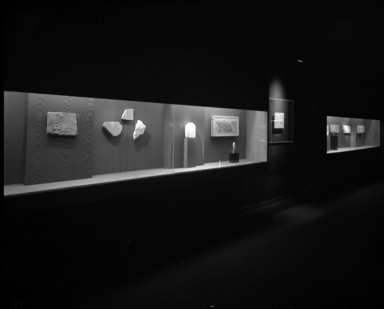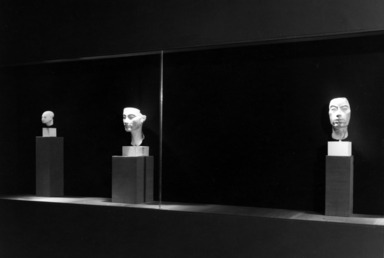

Akhenaten & Nefertiti: Art from the Age of the Sun King, September 19, 1973 through November 25, 1973 (Image: ECA_E_1973_Akhenaten_001_print_bw_SL5.jpg Brooklyn Museum photograph, 1973)

Akhenaten & Nefertiti: Art from the Age of the Sun King, September 19, 1973 through November 25, 1973 (Image: ECA_E_1973_Akhenaten_002_print_bw_SL5.jpg Brooklyn Museum photograph, 1973)

Akhenaten & Nefertiti: Art from the Age of the Sun King, September 19, 1973 through November 25, 1973 (Image: ECA_E_1973_Akhenaten_003_print_bw_SL5.jpg Brooklyn Museum photograph, 1973)

Akhenaten & Nefertiti: Art from the Age of the Sun King, September 19, 1973 through November 25, 1973 (Image: ECA_E_1973_Akhenaten_004_bw_SL5.jpg Brooklyn Museum photograph, 1973)
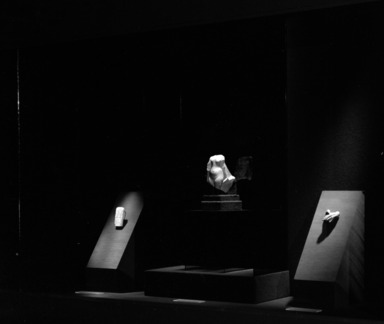
Akhenaten & Nefertiti: Art from the Age of the Sun King, September 19, 1973 through November 25, 1973 (Image: ECA_E_1973_Akhenaten_005_bw_SL5.jpg Brooklyn Museum photograph, 1973)
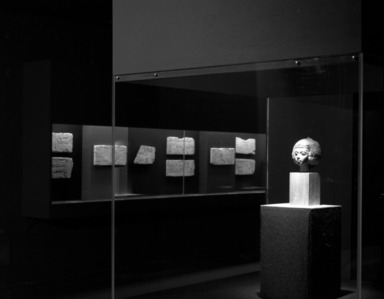
Akhenaten & Nefertiti: Art from the Age of the Sun King, September 19, 1973 through November 25, 1973 (Image: ECA_E_1973_Akhenaten_006_bw_SL5.jpg Brooklyn Museum photograph, 1973)

Akhenaten & Nefertiti: Art from the Age of the Sun King, September 19, 1973 through November 25, 1973 (Image: ECA_E_1973_Akhenaten_007_bw_SL5.jpg Brooklyn Museum photograph, 1973)
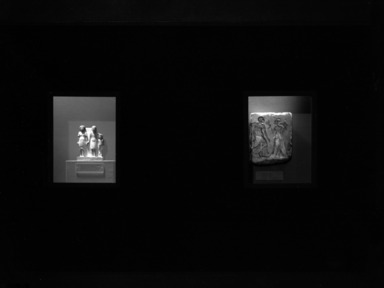
Akhenaten & Nefertiti: Art from the Age of the Sun King, September 19, 1973 through November 25, 1973 (Image: ECA_E_1973_Akhenaten_008_bw_SL5.jpg Brooklyn Museum photograph, 1973)
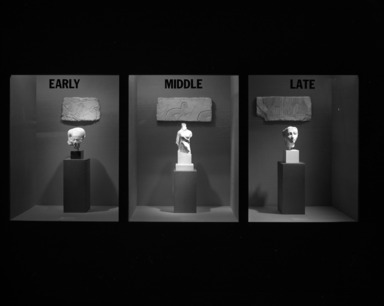
Akhenaten & Nefertiti: Art from the Age of the Sun King, September 19, 1973 through November 25, 1973 (Image: ECA_E_1973_Akhenaten_009_bw_SL5.jpg Brooklyn Museum photograph, 1973)
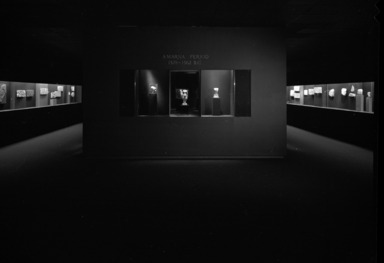
Akhenaten & Nefertiti: Art from the Age of the Sun King, September 19, 1973 through November 25, 1973 (Image: ECA_E_1973_Akhenaten_010_bw_SL5.jpg Brooklyn Museum photograph, 1973)
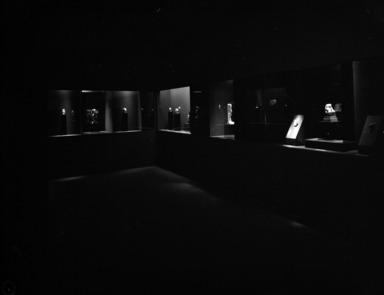
Akhenaten & Nefertiti: Art from the Age of the Sun King, September 19, 1973 through November 25, 1973 (Image: ECA_E_1973_Akhenaten_011_bw_SL5.jpg Brooklyn Museum photograph, 1973)
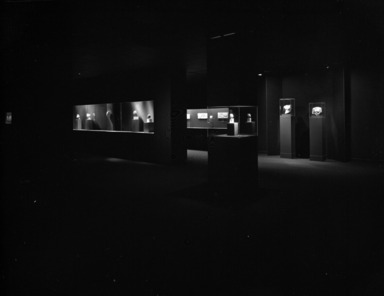
Akhenaten & Nefertiti: Art from the Age of the Sun King, September 19, 1973 through November 25, 1973 (Image: ECA_E_1973_Akhenaten_012_bw_SL5.jpg Brooklyn Museum photograph, 1973)

Akhenaten & Nefertiti: Art from the Age of the Sun King, September 19, 1973 through November 25, 1973 (Image: ECA_E_1973_Akhenaten_013_bw_SL5.jpg Brooklyn Museum photograph, 1973)
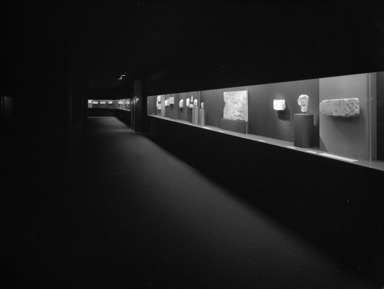
Akhenaten & Nefertiti: Art from the Age of the Sun King, September 19, 1973 through November 25, 1973 (Image: ECA_E_1973_Akhenaten_014_bw_SL5.jpg Brooklyn Museum photograph, 1973)
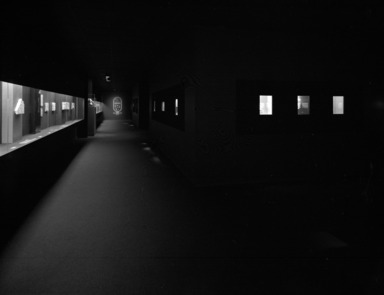
Akhenaten & Nefertiti: Art from the Age of the Sun King, September 19, 1973 through November 25, 1973 (Image: ECA_E_1973_Akhenaten_015_bw_SL5.jpg Brooklyn Museum photograph, 1973)
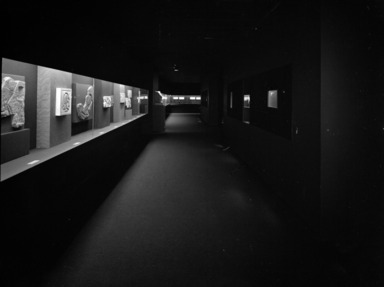
Akhenaten & Nefertiti: Art from the Age of the Sun King, September 19, 1973 through November 25, 1973 (Image: ECA_E_1973_Akhenaten_016_bw_SL5.jpg Brooklyn Museum photograph, 1973)

Akhenaten & Nefertiti: Art from the Age of the Sun King, September 19, 1973 through November 25, 1973 (Image: ECA_E_1973_Akhenaten_017_bw_SL5.jpg Brooklyn Museum photograph, 1973)
Akhenaten & Nefertiti: Art from the Age of the Sun King
-
July 10, 1973
The Brooklyn Museum is the recipient of a grant in the amount of $12,000 from the van Ameringen Foundation, Inc. to assist in the funding of its summer educational programs.
The summer programs made possible through the generosity of the van Ameringen Foundation, Inc. include several summer workshops for children which will introduce them to the Age of Akhenaten and related periods in the history of Egypt. The Museum’s outstanding collection of Egyptian art considered by many to be the finest outside of Cairo will be utilized by the youngsters participating in the program. This theme was chosen to create an awareness and stimulate interest in the forthcoming exhibition AKHENATEN AND NEFERTITI: ART FROM THE AGE OF THE SUN KING opening at the Museum on September 19.
Approximately 4 workshops of 40 youngsters between the ages of nine and fifteen will meet three days a week. After a basic orientation into the daily life of ancient Egypt, some groups will create objects related to the architecture, religion, communications and material culture of the time, including clay tablets with hieroglyphs, wall paintings, reliefs, funerary objects, jewelry and other articles of adornment.
Other groups will study the myths and legends of Egypt through creative movement, and utilizing the objects studied and created, will present performances open to the public.
The programs will be video taped to provide a record of the progress and development of the youngsters as they become immersed in their study of ancient Egypt. In the Fall, the tapes will be installed as part of the interpretive program of the AKHENATEN AND NEFERTITI exhibition which will bring together the most important works of art produced during the Amarna period in ancient Egypt (1378 to 1362 B.C.).
Brooklyn Museum Archives. Records of the Department of Public Information. Press releases, 1971 - 1988. 1973, 019.
View Original -
August 28, 1973
The first comprehensive exhibition in the United States of Egyptian reliefs, statuary and other rare objects from the Amarna Period (1378-1362 B.C.), AKHENATEN AND NEFERTITI: ART FROM THE AGE OF THE SUN KING, will open at The Brooklyn Museum on September 19th and remain on view through November 25th. Admission is free.
More than one hundred and seventy of the most important examples of Amarna art have been chosen from Brooklyn’s own renowned Egyptian collection and borrowed from museums and private collections around the world. The exhibition is designed to illustrate the wide range of new styles and subject matter that distinguish the art of this period and to trace its chronological development.
To clarify the historic and artistic significance of the works on exhibition, trilingual labels, in English, Spanish and French, have been prepared. In addition, an illustrated pamphlet containing the background of the Egyptian empire through the Amarna Period and chronicling the extraordinary reign of the young Pharaoh, Akhenaten (“Beloved of Aten”) and his beautiful Queen, Nefertiti (“The Beautiful One Is Come”) will be available. The comprehensive catalogue of the exhibition AKHENATEN AND NEFERTITI: ART FROM THE AGE OF THE SUN KING, has been written by the distinguished Egyptologist, Cyril Aldred, Keeper of the Department of Art and Archaeology, Royal Scottish Museum, Edinburgh, who has devoted more than a decade to the study of the age of Akhenaten. Fully illustrated, the 230-page catalogue includes an important essay on the art of the Amarna Period as well as a detailed entry for each object. It will be published by the Viking Press in association with The Brooklyn Museum. (Paperback: $5.95, Hardcover: $16.95. For mail orders, add an additional 50¢ to cover postage and handling).
Among the most unusual works included in AKHENATEN AND NEFERTITI: ART FROM THE AGE OF THE SUN KING is a dark brown wooden head of Queen Tiye, the mother of Akhenaten, and a number of remarkably realistic stucco portrait heads of courtiers in Akhenaten’s service. From the Louvre comes a voluptuous torso of Queen Nefertiti wearing a clinging, pleated robe which once formed part of a group. [There is a] fish vessel in polychrome glass from the British Museum, and the greatest private collector of Egyptian art in the United States is lending twenty-one of his finest reliefs.
In 1378 B.C. when Amenhotep IV (later to become “Akhenaten”) ascended the throne of Egypt, he inherited a land whose culture was undergoing profound transformations. The new Pharaoh initiated even more revolutionary changes, introducing for example, the worship of a single god, the Aten. The Aten was symbolized by a sun disk from which radiated beams of light terminating in human hands which protected the Pharaoh and his family and through them, the land of Egypt. In honor of his chosen God, the King changed his name to Akhenaten, thus emphasizing the worship of the solar deity and turning his back on the other gods, particularly Amun for whom he had been originally named.
Since all major gods had cities dedicated to them, Akhenaten, with the aid of ‘divine guidance’, chose for his capital city a site lying on the east bank of the Nile midway between Thebes and Memphis and named it Akhetaten (“Horizon of the Aten”). The place is now called Tell el Amarna, and Akhenaten’s reign is known as the Amarna Period.
Palaces, temples and magnificent gardens were created in the new capital where Akhenaten now reigned with the exquisite Nefertiti and their six daughters. To decorate the splendid tombs and temple walls, new religious images appeared, depicting the King making offerings to the new deity, and in the new tradition, accompanied by his wife and children. The domestic life of the royal family became a subject of major importance with huge reliefs picturing scenes in which the King and Queen recline at their ease, the children perched on their laps. Nefertiti is shown sitting on Akhenaten’s lap and kissing him, and both the King and Queen are seen affectionately embracing their daughters. Common people also made their appearance along with courtiers, and even the birds and beasts were shown in their natural habitats.
Earlier Egyptian art had avoided any display of feeling, but much of the art of the Amarna Period is frankly emotional. Affection and delight exist along with sorrow[,] and while the art of this period was not precisely naturalistic[,] still retaining some of the stylized ancient conventions, it is markedly infused with the breath of life. The unusual facial features of the royal family, for example, give their representations a quality of realism alien to that of earlier inexpressive works. In AKHENATEN AND NEFERTITI: ART FROM THE AGE OF THE SUN KING it is possible to trace the chronological development of the new style in the many faces of Akhenaten and Nefertiti from the early images in which both have strangely exaggerated and virtually identical features to the later representations in which both appear more human and individualized.
What happened toward the end of the Amarna Period is not known with certainty. With Akhenaten’s death and the succession of the boy-king, Tutankhamen, the powerful priesthood restored the ancient gods, and Tell el Amarna was abandoned to the winds and sands of the surrounding desert. Half a century later, Ramesses II dismantled the buildings and used the stone to construct his own temples and monuments across the Nile at Hernopolis.
While many of these decorated blocks of stone were recovered and some have been matched up to provide whole scenes, there are still numerous tantalizing fragments whose meaning is unclear. Important questions about the reign of Akhenaten and Nefertiti remain unanswered: was he a religious revolutionary, the first monotheist, the first pacifist, a prophet of a religion of love and brotherhood, and the champion of the people against a powerful and oppressive priesthood? Or was he a crafty politician...an idle dreamer whose inaction lost an empire? He has been called a genius...a fanatic...a weak-willed freak dominated by Nefertiti, the real power behind the throne. He has even been accused of being a woman in disguise. Some day, perhaps, scholars may be able to solve the mysteries of the reign of this intriguing ruler.
Among the museums who have made objects available to this unusual exhibition are: San Diego Museum of Man; The Toledo Museum of Art; The Virginia Museum of Fine Arts, Richmond; The University Museum, U. of Pennsylvania; The Cleveland Museum of Art; Metropolitan Museum of Art; Albright-Knox Art Gallery, Buffalo; William Rockhill Nelson Gallery of Art and Atkins Museum of Fine Arts, Kansas City; The Detroit Institute of Arts; Museum of Fine Arts, Boston; Musées Royaux d’Art et d’Histoire, Brussels; Staatliche Sammlung Ägyptischer Kunst, Munich; The Royal Scottish Museum; Fitzwilliam Museum, Cambridge; Ashmolean Museum, Oxford; University College London; Ägyptisches Museum, Staatliche Museen zu Berlin, Deutsche Demokratische Republik; Ägyptisches Museum der Staatlichen Museen, Preussicher Kulturbesitz; The British Museum; Musée du Louvre.
Upon conclusion of its Brooklyn showing, AKHENATEN AND NEFERTITI: ART FROM THE AGE OF THE SUN KING will travel to the Detroit Institute of Arts where it will open on the 19th of December.
Brooklyn Museum Archives. Records of the Department of Public Information. Press releases, 1971 - 1988. 1973, 020-23.
View Original -
October 2, 1973
An exceptional exhibition of English graphic art, chosen from the extensive collections of The Brooklyn Museum, ENGLISH PRINTS AND DRAWINGS: 18th CENTURY TO THE PRESENT opens at the Museum on Wednesday, October 3. Spanning three centuries, and comprised of more than 100 works, the exhibition will remain on view in the second floor Print Galleries through January 6, 1974. Admission is free.
ENGLISH PRINTS AND DRAWINGS: 18th CENTURY TO THE PRESENT has been arranged to illustrate chronologically the rise, decline, fall and new rise in this century of English printmaking. Beginning with William Faithorne (b. 1616), the first great English portrait engraver of both Royalist and Roundheads, the exhibition runs through time to recent works by Richard Hamilton; S. W. Hayter; Reg Butler; Bridget Riley; and David Hockney’s recent etchings based on poems by C. P. Cavafy. Thomas Shotter Boys, precursor of colored lithography, is represented by his finest lithographs of Paris. John Crome of Norwich, a little known but influential artist of the early nineteenth century, is represented by a charming landscape drawing.
The great English satirists and caricature artists are in abundance - George Cruikshank and William Hogarth with their vitriolic comments on English society; James Gillray with a caustic bite at Napoleon; and Thomas Rowlandson with previously unpublished drawings. The great English mezzotint artists, Valentine Green and Richard Earlom, are represented by large portraits. Dante Gabriel Rossetti, chief exponent of the pre-Raphelites contributes two major drawings - “Dante,” and “Silence.” A rare drawing, "Pass of St. Gothard," 1835, by John Ruskin the great English critic and aesthetician of the nineteenth century will be a special surprise.
In the Special Exhibition Gallery, AKHENATEN AND NEFERTITI: ART FROM THE AGE OF THE SUN KING, the first comprehensive exhibition in the United States of Egyptian reliefs, statuary and other rare objects from 1378 - 1362 B.C. will remain on view through November 25.
Brooklyn Museum Archives. Records of the Department of Public Information. Press releases, 1971 - 1988. 1973, 038
View Original

